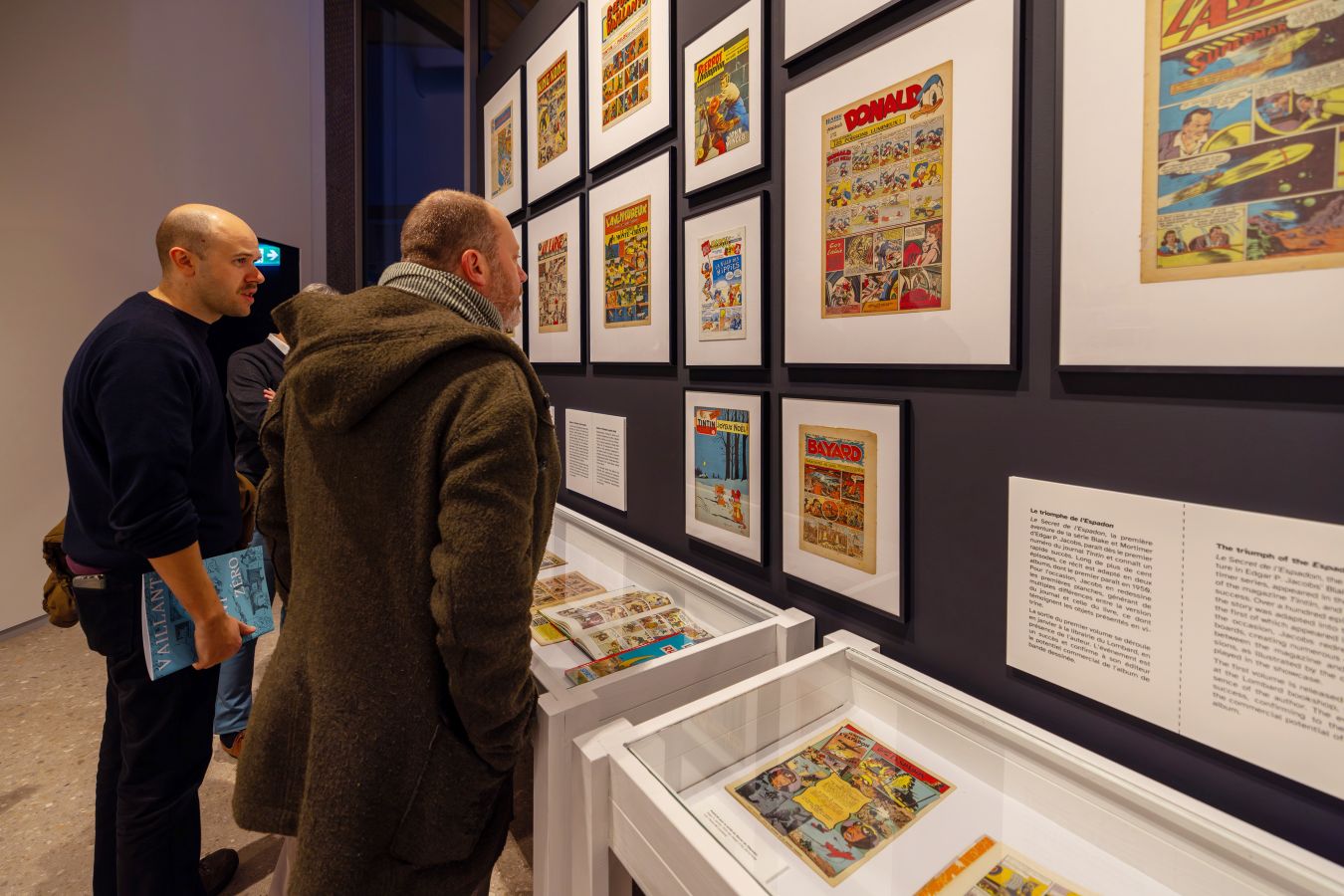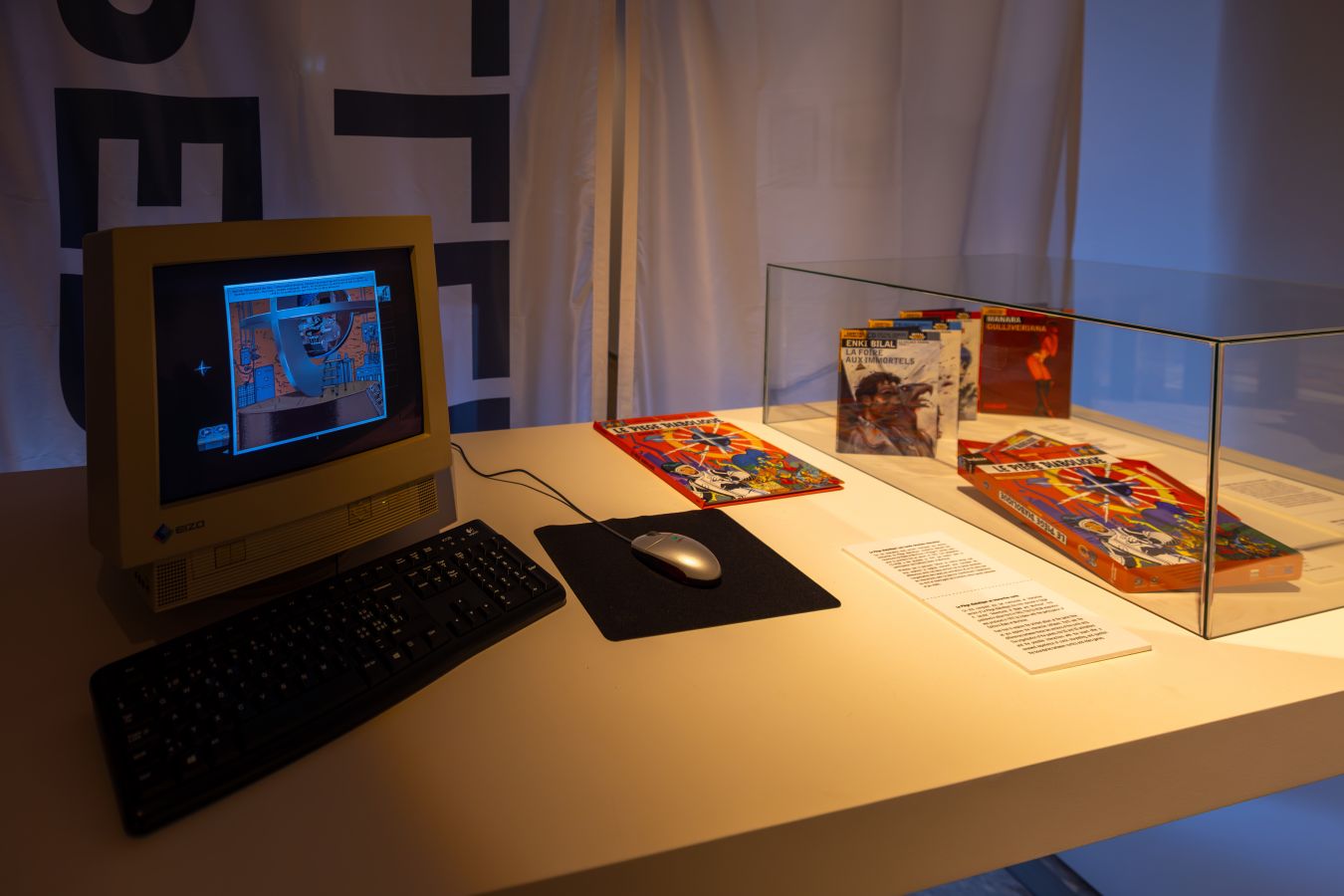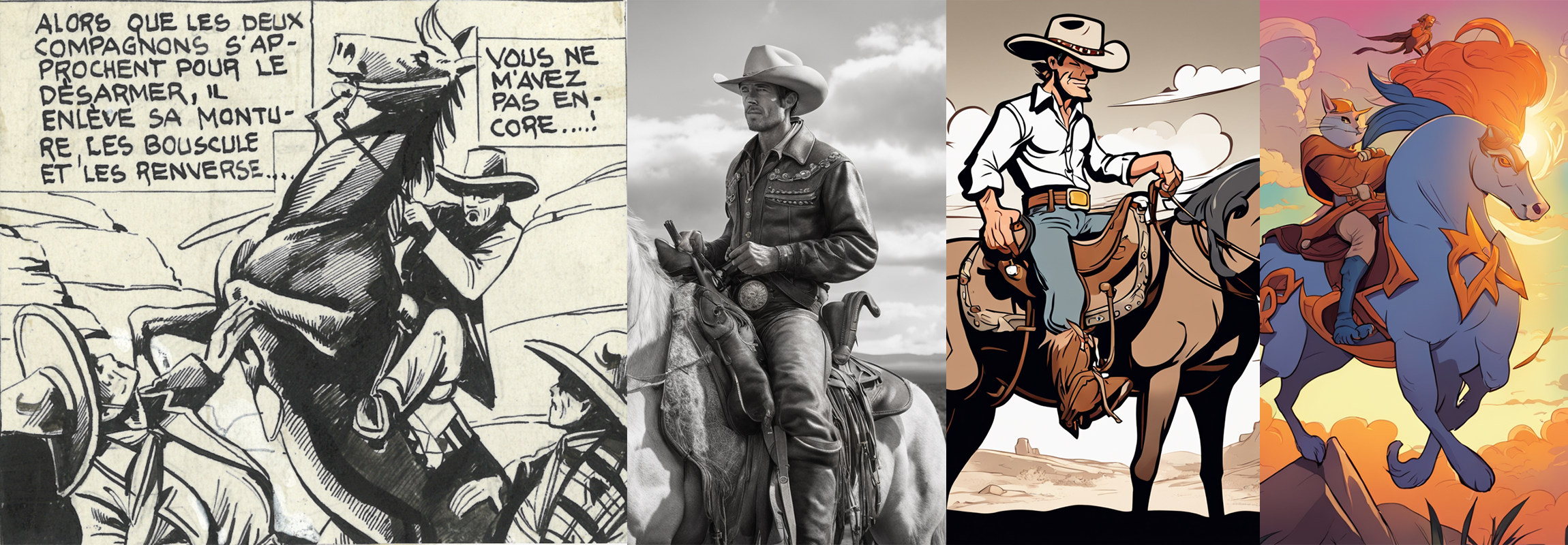From Tuesday to Sunday
11 am – 6 pm
Closed on Monday
Free Entry
Cut/Paste sheds light on comics' intimate relationship with their publication formats and the intriguing journey from tangible scissors-and-glue edits to artificial intelligence-powered transformations. Delving into editorial histories, it showcases how AI tools aid in adapting classic 1950s narratives for today's varied mediums, featuring reinterpretations by students from the Geneva School of Comics and Illustration. A profound exploration of tradition and technology in the digital comics realm.
The comic book, as a form of graphic art, is deeply tied to its publication formats. The story told in a large, colored page of an album, differs from that of a black-and-white strip published in a daily newspaper. Every time a story changes medium, it must be reinvented. Before the digital age, authors and publishers used scissors and glue to reformat their pages, transitioning from magazines to albums formats or from albums to pocket formats. The advent of the digital age didn't eliminate printed media but added new variations to this ever-evolving art, which now appears on screens of many different sizes. Fortunately, digital technologies also offer new tools to facilitate the reconfiguration of the graphic narrative.
The exhibition begins with a deep dive into the editorial history of comics to explore its various mediums and the reconfigurations that result from them. We then present interactive artificial intelligence research aimed at developing digital tools to facilitate the adaptation of graphic stories to a wide variety of formats. The exhibition concludes with a workshop in which students from the Geneva School of Comics and Illustration reinterpreted two historic series published in the 1950s to adapt them to different media, both print and digital.
This exhibition stems from the Sinergia project "Reconfiguring Comics in our Digital Era", funded by the Swiss National Science Foundation (FNS No. 180359), overseen by Sabine Süsstrunk, Mathieu Salzmann, and Raphaël Baroni.

Photo: Artinite photography

Photo: Artinite photography

Photo: Artinite photography

Photo: Artinite photography

Photo: Artinite photography

Photo: Artinite photography

Photo: Artinite photography

Photo: Artinite photography
